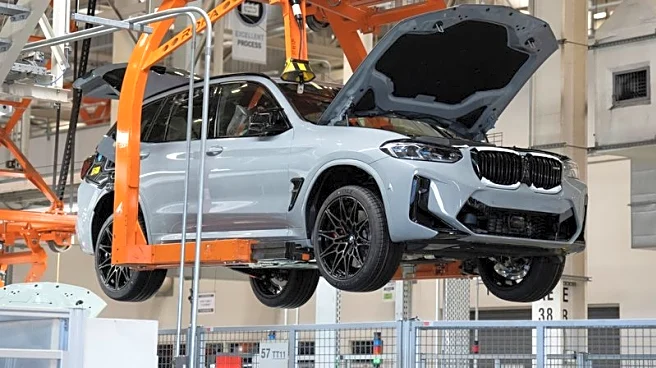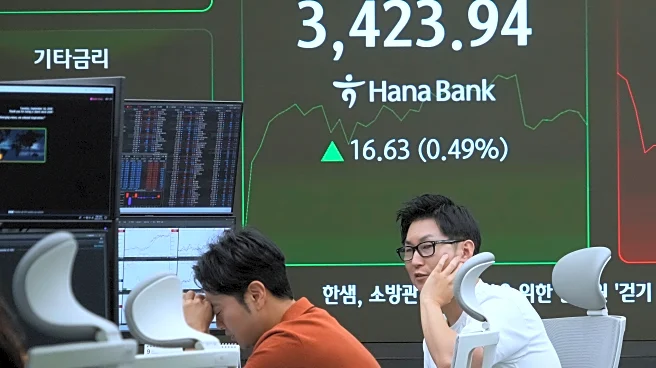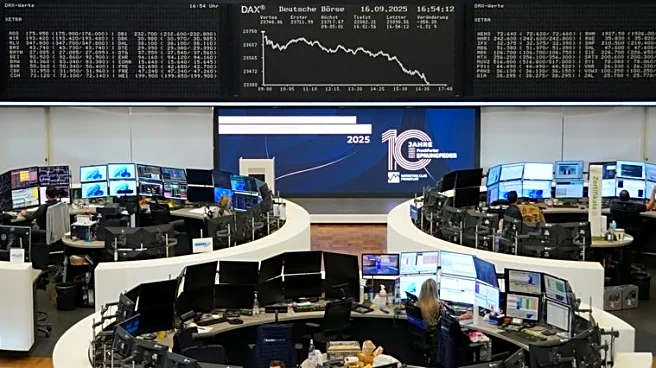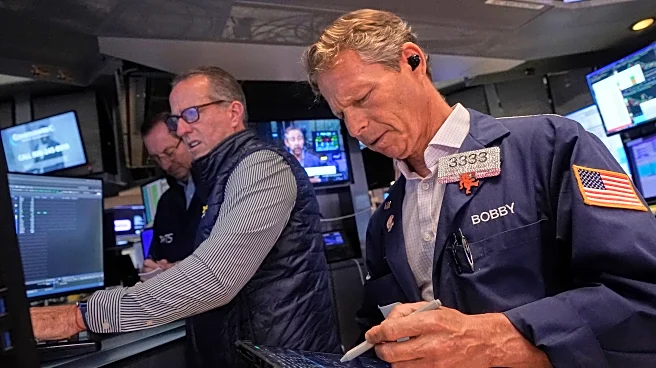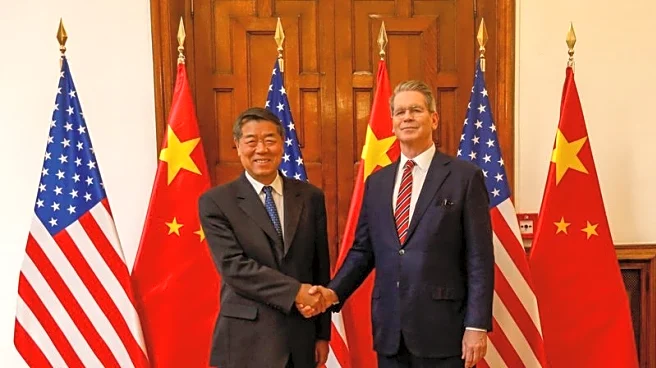What's Happening?
U.S. manufacturing output saw an unexpected increase in August, driven by a rebound in motor vehicle production and some nondurable goods. According to the Federal Reserve, manufacturing output rose by 0.2% last month, following a revised 0.1% decline in July. This increase defied economists' expectations, who had predicted a 0.2% decline. The sector, which constitutes 10.2% of the U.S. economy, also experienced a 0.9% year-over-year increase in production. Despite the positive trend, tariffs imposed by President Trump, including a 50% duty on steel and aluminum and a 25% tax on motor vehicles and parts, continue to impact the manufacturing sector. While some segments have been negatively affected, others have benefited from increased spending on artificial intelligence. Motor vehicle and parts production notably rebounded by 2.6% in August after a 0.7% decline in July.
Why It's Important?
The unexpected rise in manufacturing output is significant as it suggests resilience in the U.S. industrial sector despite ongoing trade tensions and tariffs. The rebound in motor vehicle production is particularly noteworthy, as it indicates a potential recovery in one of the key components of the manufacturing industry. This development could have positive implications for employment and economic growth, as manufacturing is a critical driver of the U.S. economy. However, the continued impact of tariffs highlights the challenges faced by the sector, with some segments still struggling due to increased production and labor costs. The mixed effects of tariffs underscore the complexity of reviving the U.S. industrial base in the current economic climate.
What's Next?
Looking ahead, the manufacturing sector may continue to experience fluctuations as it navigates the challenges posed by tariffs and global competition. Stakeholders, including policymakers and industry leaders, will likely monitor the situation closely to assess the long-term impact of trade policies on the sector. Further developments in artificial intelligence and other technological advancements could also play a role in shaping the future of U.S. manufacturing. Additionally, any changes in trade policies or economic conditions could influence the trajectory of the sector in the coming months.
Beyond the Headlines
The rise in manufacturing output also raises questions about the sustainability of current trade policies and their long-term effects on the U.S. economy. The balance between protecting domestic industries and fostering global trade relationships remains a critical issue. As the sector adapts to new technologies and market demands, the role of innovation and investment in driving growth will be increasingly important. The ongoing debate over tariffs and trade policies may also influence future political and economic strategies.

